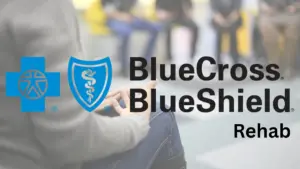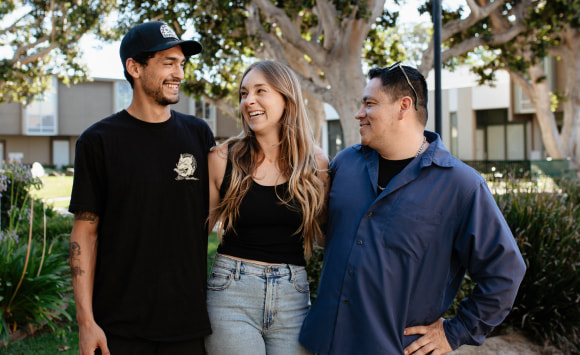The Benzo Family of Drugs, while effective under medical care, is among the most frequently misused prescription drugs in the U.S.
Here, readers will explore the most common types, the street names they’re known by, and the serious risks tied to unsafe use. Beyond the facts, this discussion also points individuals and families toward trusted recovery programs that offer professional care, guidance, and hope for lasting healing.

What Are Benzodiazepines?
Benzodiazepines (benzos) are medications that act on the brain and central nervous system to produce a calming effect. They work by targeting specific receptors that help reduce overactivity in the brain, which is why they are often prescribed for conditions involving anxiety, stress, or sleep problems.
Because they act quickly, they can be life-saving in emergencies like ongoing seizures. In fact, the benzo family of drugs play a role in about 1% to 2% of emergency department visits in the U.S. each year.
When used as directed, benzodiazepines can be helpful and effective. However, not all medications in this group work the same way. Each one is designed for specific needs and situations.
Some act faster, others last longer, and their effects can vary depending on the condition being treated. Understanding these differences helps explain why certain types are prescribed more often than others.
Common Benzodiazepine Medications
The U.S. Food and Drug Administration (FDA) has approved several benzodiazepines to treat anxiety, sleep problems, seizures, and alcohol withdrawal. Here are some of the most common ones and their main uses:
- Alprazolam – Helps manage anxiety and panic disorders, including those with sudden fear or agoraphobia.
- Chlordiazepoxide – Commonly used to ease symptoms of alcohol withdrawal and reduce agitation during detox.
- Clobazam – Used to control seizures, especially in people with Lennox-Gastaut syndrome, a rare form of epilepsy.
- Clonazepam – Prescribed for panic disorders and certain types of seizures, such as absence and myoclonic seizures.
- Clorazepate – Taken for short-term relief of anxiety and to help control partial (focal) seizures.
- Diazepam – Used to treat alcohol withdrawal and anxiety; a rectal form is available to stop febrile seizures in children.
- Estazolam – Helps people fall asleep and stay asleep when struggling with insomnia.
- Flurazepam – Also prescribed for insomnia, particularly to improve sleep quality through the night.
- Lorazepam – Used for anxiety and severe seizures; often given in hospitals for ongoing convulsive seizures.
- Midazolam – Used in hospitals for seizure emergencies and sedation during short medical procedures or in intensive care.
- Oxazepam – Helps manage anxiety and alcohol withdrawal symptoms safely, especially for people with liver concerns.
- Quazepam – A longer-acting medication prescribed mainly for chronic insomnia.
- Temazepam – Aids both in falling asleep and staying asleep through the night.
- Triazolam – Works quickly to help with trouble falling asleep, but is usually for short-term use.
- Remimazolam – A newer benzodiazepine approved in 2020, used for short medical procedures requiring mild sedation.
While each medication has a medical purpose, many can be misused or obtained illegally, leading to serious health risks. Learning how misuse happens and what signs to watch for can help prevent dependency and protect lives.
Street Names, Misuse, and Dependency in the U.S.
People often call benzodiazepines by different names on the street. Common slang terms include “downers,” “benzos,” “tranks,” “bars,” “zannies,” and “sleepers.” These names usually refer to pills that people take without a prescription, often to relax, sleep, or boost the effects of other drugs.
Misuse happens when people take benzodiazepines more often or in higher doses than prescribed or when they use them without a doctor’s supervision. Some mix them with alcohol or opioids to intensify the calming effects. This is extremely dangerous because it can slow breathing, lower the heart rate, and even cause death.
Over time, the body can become dependent on benzodiazepines. To understand why dependence develops and why withdrawal can feel so severe, it helps to look at how these medications interact with the brain and body.
How Benzodiazepines Affect the Brain and Body
Benzodiazepines work by slowing down activity in the brain and central nervous system (CNS). They do this by acting on special brain receptors called GABA-A receptors, which help control how excited or calm the brain feels.
Inside these receptors, a chemical messenger called GABA (gamma-aminobutyric acid) is the brain’s main “calming” signal. It tells nerve cells to slow down. When benzodiazepines attach to their specific sites on the receptor, they help GABA work better.
This allows more chloride ions to flow into the nerve cells, making them less active. As a result, the brain becomes calmer, which reduces anxiety, relaxes muscles, and helps with sleep or seizures.
However, when there’s no GABA around, benzodiazepines don’t have an effect. They only strengthen the calming signals already present in the brain.
How the Body Processes Benzodiazepines
The way the body absorbs, distributes, breaks down, and removes benzodiazepines helps determine how quickly they work and how long their effects last. These key steps include the following:
- Absorption: Most benzodiazepines are absorbed well when taken by mouth. Some, like lorazepam and midazolam, work faster when given through an injection. Midazolam, in particular, crosses into the brain quickly, which is why it acts fast in emergencies.
- Distribution: After entering the bloodstream, benzodiazepines attach to proteins in the blood and move throughout the body, including the brain. Some, like diazepam, spread quickly and act longer because of how the body stores and releases them.
- Metabolism: The liver breaks down most benzodiazepines. Some go through several stages of processing, forming active byproducts that keep working in the body. Others, like lorazepam, skip certain steps and are easier for the body to handle, making them safer for people with liver problems.
- Elimination: The kidneys remove benzodiazepines and their byproducts from the body. Some forms, like diazepam, last longer because their active ingredients stay in the system before being fully cleared. In older adults or people with kidney problems, the effects can last even longer.
Understanding how these processes work is important, especially when considering how benzodiazepines should be taken safely under medical supervision.
Taking Benzodiazepines
The most common methods are by mouth (oral) or through a vein (IV). In emergencies, when these options aren’t possible, doctors may use nasal sprays, injections into a muscle (IM), or rectal administration, especially for children having seizures who don’t yet have IV access.
When giving benzodiazepines, medical professionals usually start with small doses and increase them slowly until the desired effect is reached, whether that’s calming anxiety, stopping a seizure, or helping someone relax.
It usually takes about three to five minutes for the medicine to take full effect when given through an IV, so doctors wait between doses to prevent over-sedation or breathing problems.
Because benzodiazepines can slow breathing and heart rate, emergency staff always have airway and resuscitation equipment ready when administering them. This includes tools like oxygen masks, airways, or intubation devices, depending on the patient’s needs.
Each type of benzodiazepine also has an equivalent strength compared to diazepam, which doctors use as a reference to ensure safe and accurate dosing.
What Makes Benzodiazepines Risky
The health effects and safety risks of benzodiazepines include the following:
Common Side Effects
Many people experience drowsiness, confusion, headaches, nausea, vomiting, or tremors after taking benzodiazepines. Some may feel dizzy, tired, or have trouble concentrating. These effects usually lessen once the medication wears off, but they can be stronger in older adults or people taking other sedatives.
Serious Reactions
In rare cases, benzodiazepines can cause trouble breathing (respiratory depression) or even respiratory arrest, especially when mixed with alcohol or opioids. Some people may faint, experience irregular heartbeats, or feel unusually weak or shaky. Long-term use can affect memory and thinking, leading to cognitive problems over time.
Effects in Newborns and Children
Though uncommon, babies exposed to benzodiazepines, whether during treatment or through a mother’s use, may experience breathing problems, irregular heart rhythms, or muscle weakness. They may also have nausea, vomiting, or excessive drooling.
Vision and Coordination Problems
Some users report blurred or double vision, trouble focusing, or loss of balance. These effects can make driving or operating machinery unsafe while under the drug’s influence.
Liver and Blood Pressure Concerns
A few benzodiazepines, such as alprazolam, clonazepam, and diazepam, have been linked to rare cases of liver injury. Others, like remimazolam, can cause high or low blood pressure, so doctors monitor these closely during procedures.
Drug Interactions
Benzodiazepines can react dangerously with other substances:
- Alcohol, opioids, and other sedatives (like barbiturates) can greatly increase the risk of slowed breathing and overdose.
- Certain seizure and antibiotic medications (such as carbamazepine, phenytoin, and rifampin) may reduce how well benzodiazepines work.
- Strong CYP3A4 inhibitors (including antifungals, some antibiotics, and even grapefruit juice) can raise benzodiazepine levels in the body, causing excessive drowsiness or sedation.
Because of these risks, benzodiazepines should always be taken exactly as prescribed and never mixed with other medications or alcohol without a doctor’s approval.
If someone is struggling with dependency or unsafe use, recovery programs can provide the medical guidance and emotional support needed to heal. With professional care, individuals can safely detox, rebuild balance, and move toward lasting recovery.
Safe, Effective Paths to Recovery
Recovering from benzodiazepine dependence takes time and professional support. Stopping on your own can be dangerous because symptoms can become severe without medical care.
At Oceanrock Health and South Coast Counseling, recovery begins with compassion and safety. Each center offers medically supervised detox programs that help individuals begin the healing process in a structured, supportive environment.
Once stabilized, therapy and counseling focus on addressing the root causes of substance use, building healthy coping skills, and promoting emotional balance.
Families are also included in the process through education and guided support, helping them play an active role in their loved one’s recovery. Through individual therapy, group sessions, and continuing aftercare, our programs help people regain control of their lives and move forward with confidence, hope, and lasting stability.








